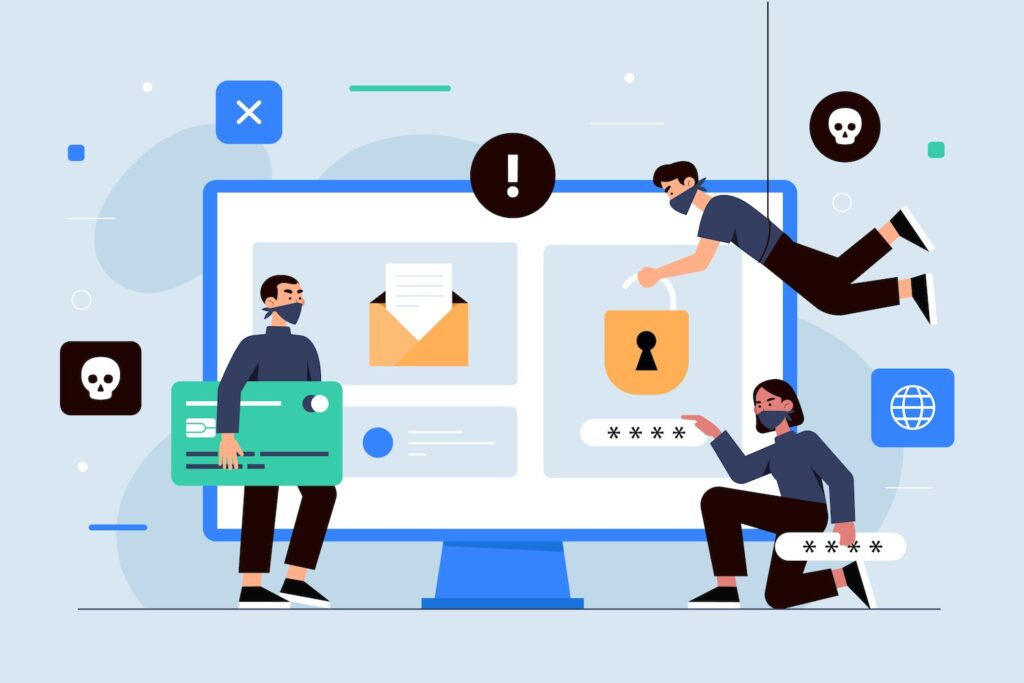How to make WordPress GDPR-compliant
What Is GDPR?
GDPR(General Data Protection Regulation) is a set of European regulations designed to protect your data. It gives you control over how your data is used and ensures that businesses handle it by stringent guidelines. Before using your data, they must obtain your consent and notify you in case of a data leak. Businesses that violate these regulations risk incurring hefty fines. These guidelines apply to any business, regardless of location, that handles information from individuals in Europe. Similar to a global norm, GDPR protects the privacy of your data.
The Importance of GDPR Compliance in the Digital Age
Following through with GDPR is becoming increasingly crucial. These regulations benefit the public and businesses by protecting people’s privacy. By abiding by these guidelines, everyone’s information is kept secure.
- GDPR requires companies to disclose to customers how they gather and use personal data. Customers will grow to trust you as a result.
- GDPR is a crucial web security undertaking that forces companies to take great care of customer data. This increases the security of online information and helps to prevent data breaches.
- GDPR increases your control over personal data. You have the option to view, edit, or even remove it.
- Despite coming from the EU, GDPR is mandatory for any international business handling the data of EU individuals. So it’s akin to an international law.
- Businesses that violate GDPR risk facing steep fines. Thus, to stay out of difficulty, firms must abide by these guidelines.
In essence, GDPR compliance is not just a legal obligation but also a commitment to ethical data practices in today’s interconnected world.
Does the GDPR Apply to My WordPress Website?
Whether the GDPR applies to your WordPress website depends largely on your audience and data handling practices.
- Audience Location: If your website caters to users from the European Union, regardless of your location, GDPR applies.
- Data Collection: Collecting personal data like names, email addresses, or IP addresses from EU citizens means GDPR is applicable.
- E-Commerce: For WordPress sites involved in various services, including e-commerce, GDPR compliance becomes essential.
- Plugins and Analytics: Installing WordPress plugins or analytics tools that gather user data and also bring your website under the interest of GDPR.
- Global Standard: Given its broad scope, many businesses opt for GDPR compliance as a global standard for data privacy and protection.
In summary, if your WordPress website interacts with EU citizens or collects any form of personal data, GDPR compliance becomes crucial to avoid potential legal and financial repercussions.
Requirements of GDPR for Websites
A set of regulations for websites is the GDPR. To protect your information, they must abide by these guidelines. It functions similarly to a to-do list for websites, keeping your personal information safe from tampering or disclosure. Your online secrets are protected by these guidelines.
- Unambiguous consent must be obtained from users before collecting, processing, or storing their data. This includes WordPress cookies and email subscriptions.
- It should be clear on websites how they gather, utilize, and distribute your personal information.
- Collect only the data that is necessary for the intended purpose.
- Users have the right to access, rectify, erase, or port their data. Websites must facilitate these rights.
- Implement strong security measures to protect data from breaches. This includes secure storage and encrypted data transfers.
- In case of a data breach, affected users and relevant authorities must be notified within 72 hours.
- Appoint a DPO (Data Protection Officer) if your website processes large amounts of data or sensitive information.
- Ensure that any third-party processors you use are also GDPR compliant.
- Obtain parental consent for processing data of children under the age of 16 (or lower, depending on the member state).
Adhering to these requirements helps ensure that your website is compliant with GDPR, thereby enhancing user trust and avoiding potential legal consequences.
Who Is Subject to GDPR?
GDPR functions similarly to a set of guidelines for companies handling names and addresses or other personally identifiable information. It instructs them on how to protect that confidential information. For instance, companies need individuals’ permission before using personal data, and they have to remove it from their systems when it’s no longer required.
- Any business based in the European Union, regardless of where the data processing occurs, falls under GDPR.
- Companies outside the EU are subject to GDPR if they offer goods or services to, or monitor the behavior of, EU residents.
- Applies across all sectors, from tech companies to retail, healthcare, and beyond.
- Both entities that control data (decide how and why data is processed) and those that process data on behalf of controllers are included.
- Websites that collect data from EU residents, including personal blogs, e-commerce sites, and social networks, must comply.
In essence, GDPR casts a wide net, encompassing virtually any organization that handles the personal data of individuals within the EU, regardless of the organization’s location.
Primary Rights Under GDPR
The General Data Protection Regulation (GDPR) grants several primary rights to individuals regarding their data. Understanding these rights is crucial for both individuals and organizations handling personal data:
- Right to Access: Individuals have the right to access their data and obtain information about how this data is processed.
- Right to Rectification: This allows individuals to correct inaccurate or incomplete personal data.
- Right to Erasure (Right to be Forgotten): Individuals can request the deletion of their data in certain circumstances.
- Right to Restrict Processing: Under certain conditions, individuals can request that the processing of their data be restricted.
- Right to Data Portability: This right allows individuals to receive their data in a structured, commonly used format, and to transfer that data to another controller.
- Right to Object: Individuals can object to the processing of their data for specific purposes, including direct marketing.
- Rights about Automated Decision Making and Profiling: Individuals have the right not to be subject to decisions based solely on automated processing, including profiling, which have legal or similarly significant effects on them.
- Right to Lodge a Complaint: Individuals can complain to a supervisory authority if they feel that the processing of their data violates GDPR.
People now have more control over their online personal information thanks to these rights, which are crucial for maintaining their privacy. To stay out of legal hot water and maintain the confidence of their clientele, businesses must abide by these regulations.
Making Your WordPress Site GDPR Compliant: Practical Steps
Making your WordPress site GDPR compliant involves several practical steps to ensure you’re handling personal data responsibly and legally.
Update WordPress and Themes
- Regular Updates: Keep WordPress, themes, and plugins updated. The latest versions often include important security patches and features for data protection.
- Compatibility Check: Ensure that updates are compatible with GDPR requirements. Some themes and plugins might not be compliant, necessitating a switch to those that prioritize privacy.
Use GDPR-Compliant Plugins
- Privacy-Focused Plugins: Install WordPress plugins designed with GDPR in mind to prioritize user privacy and data protection.
- Data Handling: Plugins that process personal data should offer clear information about their data handling practices.
- Regular Audits: Regularly review your plugins for GDPR compliance, as standards and regulations may change over time.
Add Opt-ins for Forms and Newsletters
- Clear Consent: Add clear opt-in mechanisms for forms and newsletters. Users should actively consent to data collection and usage, and this process should be documented.
- Cookie Consent: Implement a cookie consent tool. This lets users choose which cookies they allow, aligning with GDPR’s emphasis on informed consent.
- Transparency in Forms: Ensure that forms on your website explicitly state what the data is for and how it will be used.
You must protect the data of your users. You can accomplish that and gain their trust by doing the things listed above. Make sure you routinely evaluate and improve your practices.
Key WordPress-Specific Considerations
In the context of WordPress, there are specific considerations to keep in mind, particularly regarding privacy policy updates and handling analytics and cookies.
Privacy Policy Updates
- Regular Reviews: Regularly review and update your privacy policy to reflect current data handling practices.
- WordPress Tools: Utilize WordPress’s built-in tools to create or update a privacy policy, ensuring it covers all aspects of data collection and usage.
- Transparency: Clearly articulate how and why personal data is collected, stored, and used on your WordPress site.
Handling Analytics and Cookies
- Consent for Cookies: Implement a system to obtain explicit consent from users for cookie usage, in line with GDPR’s requirements for informed consent.
- Analytic Tools Compliance: Ensure that any analytics tools used are compliant with GDPR. This often involves anonymizing IP addresses and providing users with the option to opt-out.
- Cookie Policy: Include a detailed cookie policy on your site, explaining what cookies are used for and how users can control them.
These WordPress-specific considerations are essential in maintaining GDPR compliance. They not only address legal requirements but also enhance user trust and website integrity in the digital realm. Regular updates and transparency in these areas are key to effective data protection and privacy management on a WordPress site.
Protecting User Data and Handling Breaches (200 words)
Protecting user data and efficiently handling breaches are critical components of data management and privacy.
Data Security Measures
It is essential for ensuring user data security. When transferring and storing data, use robust encryption techniques to protect critical information. This ensures that access is restricted to those who are permitted.
Do thorough security audits regularly to find and fix any vulnerabilities in your system. A robust defense against potential breaches is maintained with the aid of these audits.
Strict access control procedures should be used to limit access to sensitive information. Keep admittance to authorized staff only and prohibit unauthorized individuals from entering.
Observe the data reduction principle. Only gather information that is necessary for the goals you have in mind. This lowers the possible impact in the event of a breach by limiting the amount of sensitive information kept.
Procedures for Data Breach Notifications
- Incident Response Plan: Have a detailed incident response plan in place for data breaches, outlining steps to take when a breach occurs.
- Timely Notification: In case of a data breach, GDPR mandates notifying the relevant authorities within 72 hours. Affected users should also be informed promptly.
- Documenting Breaches: Keep a record of any data breaches, including the effects and the remedial actions taken.
Trust-building and legal compliance both depend on user data protection. In today’s digital environment, robust security measures and well-defined breach-handling procedures are essential.
Additional GDPR Tips for WordPress Sites
For WordPress sites navigating GDPR compliance, here are additional tips to enhance data privacy and security:
- Conduct regular website audits to identify what personal data you’re collecting and ensure it’s being handled securely and legally.
- Ensure clear user consent mechanisms are in place, especially for cookies and subscription forms. Users should explicitly agree to the collection and use of their data.
- If using third-party services (like email marketing tools), ensure they are GDPR compliant and set up Data Processing Agreements with them.
- Adopt a data minimization approach. Collect only the data that is necessary.
- Facilitate users’ rights under GDPR, such as the right to access, rectify, or delete their data.
- Use SSL encryption to protect data transmission on your site.
- Educate your team about GDPR compliance to ensure everyone understands their role in protecting user data.
Implementing these tips can significantly bolster your WordPress site’s GDPR compliance, safeguarding user data and reinforcing your site’s credibility and trustworthiness in the digital realm.
In conclusion, ensuring your WordPress site is GDPR compliant is a crucial aspect of managing a digital presence responsibly in today’s data-driven world. From understanding what GDPR is and its significance to applying its principles specifically to WordPress, this guide has covered essential facets of compliance.
It extends further only following the law to ensure that we adhere to GDPR. Gaining confidence, protecting people’s privacy, and guaranteeing data security are equally important. We must take concrete actions to achieve this, such as upgrading our WordPress themes, utilizing compliant plugins, and putting robust data security mechanisms in place. When using the internet, these items provide people with a sense of security and confidence.
FAQ’s
1. How do I update my WordPress privacy policy for GDPR?
- To update your WordPress privacy policy for GDPR, start by reviewing your current policy to ensure it accurately reflects your data collection and processing activities. Use WordPress’s privacy policy guide as a framework. Your policy should clearly state what data you collect, why it’s collected, how it’s used, and users’ rights regarding their data. Include information on cookies, third-party data sharing, and how users can access or delete their data. Regular updates are necessary to reflect changes in data practices or regulations.
2. What plugins can I use to make my WordPress site GDPR compliant?
- There are several plugins available to help make your WordPress site GDPR-compliant. For consent management, consider using plugins like ‘CookieYes’, ‘GDPR Cookie Consent’, or ‘Complianz’. Tools like ‘WP GDPR Compliance’ or ‘Data443’ are useful for handling personal data requests. These plugins assist in automating consent management, handling data access requests, and ensuring your site complies with GDPR’s cookie policy requirements. Always ensure that any plugin you use is up-to-date and well-supported.
3. How do I handle user data requests under GDPR?
- Under GDPR, handling user data requests involves several steps. Firstly, verify the identity of the person making the request to ensure data security. WordPress offers tools to facilitate this process, like the ‘Export Personal Data’ and ‘Erase Personal Data’ tools under the Tools section. Respond to requests within one month, providing the user with a copy of their data in a readable format, or erasing their data if requested. Keep a log of requests and actions taken to maintain compliance records.
Featured image by Freepik
The post How to make WordPress GDPR-compliant appeared first on noupe.














